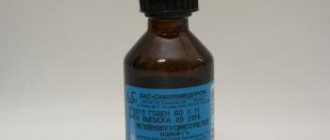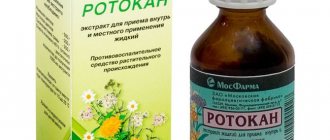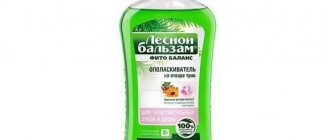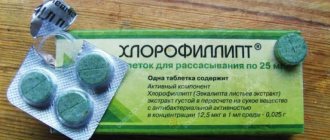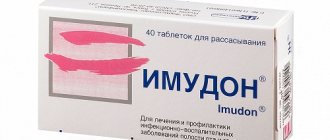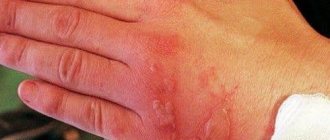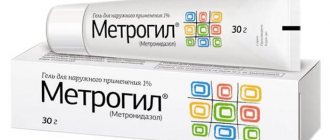Instructions for use
Having bought a medicine, a person must know how to use it, because otherwise he will not get the desired result and may even seriously harm himself. In order to avoid such a situation, there are instructions for the use of various drugs. Fukortsin is no exception. Of course, it also requires proper use, which is why the manufacturer includes instructions in the medicine package. Some patients are too lazy to read its text, but ignorance can lead to worsening problems rather than to the desired recovery.
Properties for herpes
Fukortsin has antiseptic and antifungal properties, due to which it is used for herpes. This remedy is indispensable for this pathology, especially if creams do not help. The medication dries the wounds, heals them and disinfects them, thereby making it possible to avoid the spread of infection on the skin surface. But, as when using the drug in other cases, the wounds dry out and crack. In order for the wounds to heal better, after treatment with Fukortsin, it is necessary to lubricate them with a healing cream or ointment.
Composition and release form
Fukortsin contains the following components:
- boric acid (people suffering from frequent otitis are familiar with its anti-inflammatory and antiseptic properties - in the medicine cabinet of such patients there is always a bottle of an alcohol solution of boric acid);
- acetone (it is suitable not only for removing nail polish and is part of it, but can also be used in pharmacology; it is due to this substance that the antifungal effect of Fukortsin is achieved);
- resorcinol (it also has an antiseptic effect)
- purified water;
- ethanol.
Instead of the last two components, phenol (carbolic acid) may be present in the liquid. Also, the solution always contains a magenta component, which gives it a specific red or bright crimson color.
Fukortsin solution is sold in dark glass bottles of 10 and 25 ml. For medical institutions, there is also the opportunity to purchase a liter container of the product.
How to use
The solution is intended for external use. It is allowed to apply it to the affected area only in a targeted manner; you cannot treat the entire oral cavity. In case of stomatitis, wound treatment actions should be as follows:
- A cotton swab or ear stick must be moistened in sea buckthorn oil. A swab is passed over the entire oral cavity and the plaque that forms on the ulcers - aphthae - is removed. This will make their surface clean and open to medicinal substances.
- Using a new cotton swab, apply Fukortsin solution to each ulcer. Applications should be targeted and not affect healthy tissue.
- The solution is left for 40 minutes. After this, you can drink, eat, or use other medications.
- If after the procedure nothing gets into the oral cavity, the Fukortsin solution is washed off 2 hours after application.
Attention! It is considered normal if the patient feels a burning sensation when Fukortsin touches the mucous membrane. The discomfort should go away quickly.
Video - Fukortsin: indications, side effects
Indications
Each medication has a specific list of indications, i.e., situations when they need to be used and when they are effective. Fukortsin helps in cases where a person has skin lesions:
- skin abrasions;
- cracks;
- scratches;
- wounds (but only superficial);
- erosion;
- fungal skin infections;
- the appearance of pustules on the skin
- viral, bacterial and fungal infections of the lips and oral cavity.
Sometimes Fukortsin is also used when marking the human body before radiation therapy (it is sometimes necessary for cancer patients).
Contraindications
It is not advisable to use Fukortsin for those who suffer from allergies to the components of the drug. In addition, the liquid should not be used by pregnant and lactating women, because the medicine may adversely affect the child being carried or breastfed.
If a person has any of these contraindications, but also has problems with the skin or mucous membranes of the mouth, he should consult a dermatologist or dentist.
Mode of application
Fukortsin is used to treat the affected areas of the skin. Dip cotton swabs or swabs in this liquid, lubricating problem areas with them. The procedure is repeated 2–4 times a day.
For stomatitis, they treat the mucous membranes of the mouth in the same way, but first you need to remove the plaque using a cotton swab with sea buckthorn oil.
For convenience, a small amount of the drug is poured into a container, into which a cotton swab is then dipped.
Overdose
Overdose usually occurs as a result of long-term use of Fukortsin. Its onset is indicated by the appearance of some unpleasant signs in blurred areas:
- hyperemia;
- decreased sensitivity of the treated area (anesthesia) or, conversely, increased burning sensation. When these symptoms occur, treatment with Fukortsin is stopped or the frequency of its application is reduced. However, this must be done under the supervision of a doctor, because stopping therapy for untreated skin diseases risks the fact that they can become chronic, which is much more difficult to get rid of than acute ones.
Side effects
Side effects of the drug include itching, burning and irritation of the affected areas of the skin.
special instructions
The medicine is compatible with other drugs, for example, ointments and creams, but before applying them, you need to wait until Fukortsin applied to injured or infected areas of the skin dries. The same applies to the treatment of fungal or bacterial stomatitis - you need to wait at least 40 minutes before lubricating the oral mucosa with other medications.
Storage: terms and conditions
The storage area should be dry and cool. The most suitable temperature is room temperature (no more than 25 degrees Celsius). Never allow the medicine to fall into the hands of children, because they do not understand what the liquid is for and may drink it by mistake.
Release from pharmacies
. A doctor's prescription is not required to purchase Fukortsin, so you can buy it immediately after scratches or pustules appear.
Price
The cost of a 10 ml bottle of Fukortsin ranges from 5 to 9 rubles, and a 25 ml bottle can be purchased at a price from 8 to 10 rubles. This is a relatively inexpensive product that can be found in various pharmacy kiosks or on the Internet.
Analogs
In addition to Fukortsin, wounds and abrasions on the skin can be treated with other antiseptics. Everyone is well aware of the use of the following liquids for this purpose:
- iodine (alcohol solution);
- Iodinol (blue iodine);
- an aqueous or alcohol solution of brilliant green (brilliant green);
- hydrogen peroxide;
- sage tinctures;
- alcoholic tinctures of calendula.
All these drugs, just like Fukortsin, are applied to the surface of scratches and wounds or ulcers. They can also be used for fungal skin infections or the occurrence of pustules. It is also worth saying that iodine and brilliant green have recently been available in the form of pencils, which can be purchased in regular supermarkets. This is a very convenient option, because the liquid can be spilled, as well as applied in excessive quantities to problem areas, while a pencil almost eliminates this possibility.
More modern means are Predintop, Dimexide, Gioksizon.
If a person is tormented by fungi, modern pharmacology offers him other medicines:
- Nitrofungin;
- Mycosporus;
- Pimafukort.
For traumatic and infectious skin lesions, as well as stomatitis
Abrasions, wounds and cuts, as well as pustular processes on the skin are a common occurrence in the modern world, so people have to use antiseptics, for example, Fukortsin. As a result, the drug is widely discussed on the Internet, with both good and bad things said about it:
- “An excellent product,” but “doesn’t wash off for a long time.”
- “Copes with skin ailments,” but “gets dirty.”
- “It copes well with bacterial and fungal infections,” but “it doesn’t wash off for a long time, it gets dirty.”
It is noteworthy that there is also a comment on one of the sites from a person who suffered from an inflammatory process in the mouth. A young woman tells how she got rid of this trouble with the help of Fukortsin:
“I’m almost 27 years old, and now I’ve been diagnosed with stomatitis. Inflammation appeared in my mouth with a white coating on the sore... And this particular solution was recommended to me. I dip a cotton swab into the solution and cauterize the inflammation. The treatment lasted 5 days. On day 6, everything went away for me. I'm happy. I highly recommend him to anyone who has this problem.”
As you can see, most comments say that the medicine promotes the recovery of patients, but at the same time stays on the skin for a long time. Users also report in their reviews that they can treat herpetic and chickenpox rashes, so this liquid is suitable for a wide range of people. However, it must be remembered that there are people who should avoid Fukortsin. If a pregnant woman or an allergy sufferer is thinking about treatment with a solution, you need to go to a doctor who will prescribe the antiseptic that is most suitable for such a person. If you have wounds and scratches, especially those received from animals (even domestic animals and those vaccinated against rabies and other contagious diseases), you still need to use an antiseptic to prevent infection of the damaged area. Fungal ulcerations or ulcers that have already occurred also require immediate treatment to prevent complications.
Features of stomatitis
There are few people who have never suffered from stomatitis in their lives, although the majority hardly attached much importance to these small inflammatory formations inside the oral cavity, limiting themselves to rinsing to eliminate them. However, in some cases, stomatitis can get out of control, causing a number of complications and causing noticeable discomfort.
With the exception of the vesicular type, other types of stomatitis are not contagious.
Until now, medicine does not have an exact answer to the question about the nature of the origin of stomatitis, but the mechanics of its occurrence on the oral mucosa is actually a protective reaction of the human immune system to one or another irritating factor. Lymphocytes directed by the body to fight this factor attack areas of the epithelium, thereby causing tissue inflammation and ulceration.
Doctors distinguish between different types of stomatitis depending on its etiology, which subsequently affects the choice of drug treatment. The most common types of this disease are as follows:
- allergic;
- herpetic;
- vesicular;
- aphthous;
- catarrhal;
- traumatic;
- ulcerative
Important! With the exception of the vesicular type, other types of stomatitis are not contagious, but only a doctor can make an accurate diagnosis based on the clinical picture.
As for the causes of stomatitis, the most common are pathogens of infectious diseases, which are bacteria, viruses or fungi. Inflammation of the oral mucosa is also possible due to poor nutrition, dehydration, poor oral hygiene, smoking, taking certain medications, and so on.
